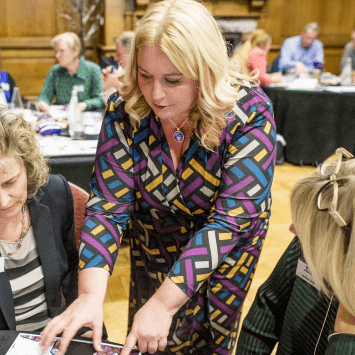Posted in Blog, Create, Facilitation, Grow, Innovation Culture, Virtual Facilitation by Jo North
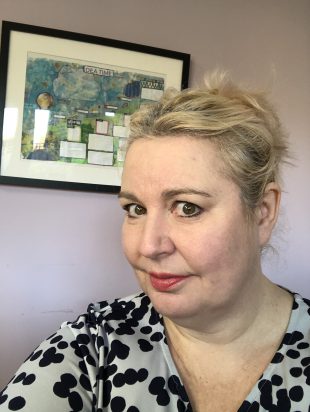
One of the members of my Idea Time for Workshop Facilitators Facebook Group asked me for some ideas for creative facilitation activities to use when working with groups to establish their vision, mission and values.
Vision, mission and values really help connect people. They support a shared sense of purpose and direction and are important ingredients for collaborative team working and performance at organisation, team and project level.
Defining Vision, Mission & Values
Let’s start off with defining what vision, mission and values mean. There are different definitions. I am going to use the ones that I use, those that I have taught on strategy and innovation programmes in universities and commercially as well. These are pretty accepted definitions, but of course you’ll also find variations on those themes.
- A vision is aspirational. It’s a statement of where the business, team or person wants to be in the future. A great vision looks ahead, is purposefully ambitious and realistically stretchy.
- The mission of a team or a business is the core purpose. It’s why that team or business actually exists, the very reason a team or business has been set up. The mission really defines the ‘why?’ behind what what the organisation does, and its reasons for doing it.
- The values are the important principles, important beliefs, ways of behaving and seeing the world that connect everyone. They represent how the business does business.
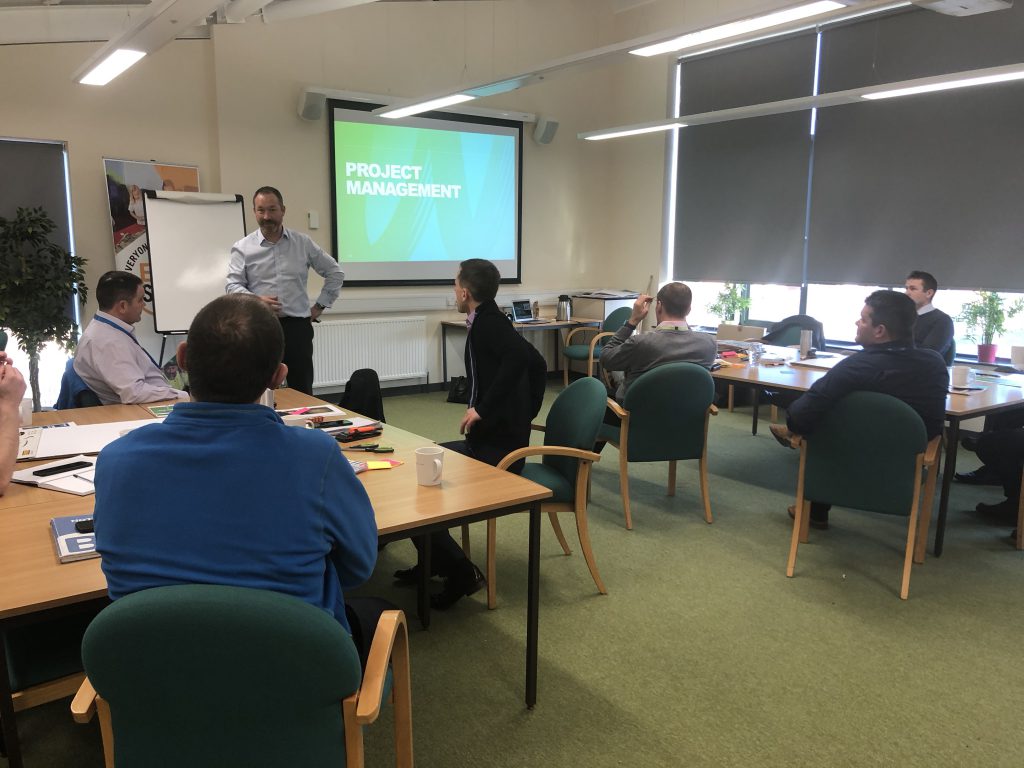
Facilitation Focus – Engagement, Contribution & Buy-in
When you are in workshops, don’t create the detail and specific wording of the vision, mission and values with a full team, or a large group of people. Instead focus on gathering the input from your delegates, and engaging them in generating ideas and raw content so that the final versions are crafted, your delegates will feel and know that they have directly contributed. It can be really frustrating and clunky to try craft the final words and solutions by committee. Instead, get the input from everybody, put it all together, condense and shape it outside the workshop, and then bring it back to the delegates for final validation in a separate session.
A Menu of My Favourite Facilitation Techniques
Here are my favourite creative facilitation techniques for getting the content for a vision, mission and values in workshops with delegates. Depending on how much time you have, you can mix and match all of these. I will share a couple each for vision, mission and values, and you can mix them up and integrate them. You don’t have to stick to just one activity per vision, mission or values theme.
Creative Facilitation Techniques for Developing a Shared Vision
Wouldn’t it be fantastic if…
My first favourite facilitation technique for Vision is ‘Wouldn’t it be fantastic if…‘ – or the WIFI technique.
Ask your delegates to work in small groups to complete the statement ‘Wouldn’t it be fantastic if…‘ as many times as they can, focusing on things that they would be able to influence, or control, or create.
You could ask ‘Wouldn’t it be fantastic if, in one year…, three years…, in five years…’ and invite them to write as many different statements as they can for each time horizon.
‘Wouldn’t it be fantastic if…‘ is so simple, but surprisingly powerful. It opens up possibility and positive thinking.
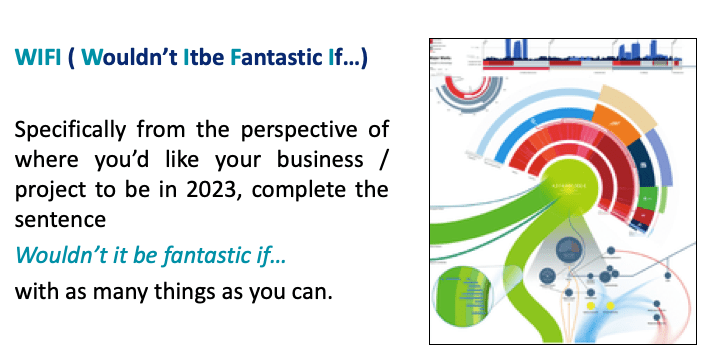
Variation – Wouldn’t it be fantastic if… collage activity
Another activity you can do which works really well is to provide some magazines, old newspapers, glue sticks, scissors, big pieces of paper. Invite your workshop participants to complete the statement ‘wouldn’t it be fantastic if…’ through a collage, or a poster, using images and headlines from the newspapers and magazines, cutting out and sticking things down, writing and drawing. Using different stimulus materials such as the words and pictures, and getting hands on with cutting and sticking activate different parts of our brain and generates different ideas. Also, getting people to work in small groups on this is a really nice way of getting them to collaborate, start talking and create something together.
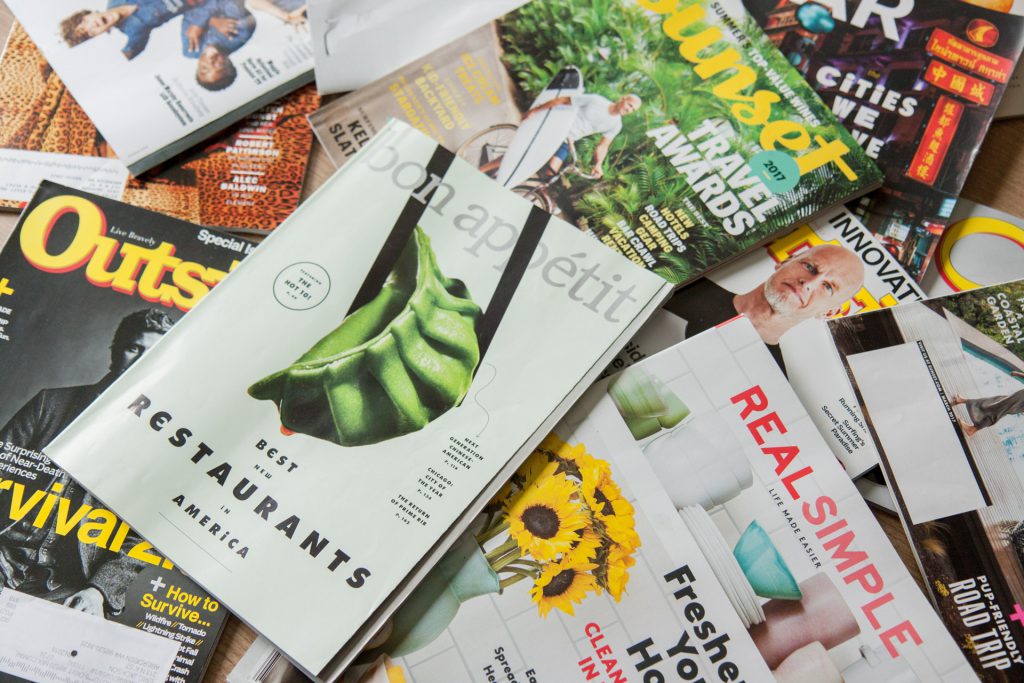
Variation – Wouldn’t it be fantastic if… 3D activity
The third way to use ‘Wouldn’t it be fantastic if…‘ is to ask delegates to build something, i.e. make something in 3D, that represents their vision of the future. I know this might sound a bit unusual, but this honestly does work! Some of these activities sound really difficult or odd to explain in words, but when you are in practice in the workshop, they can work really, really well.
Provide materials such as Lego, Play-doh or other modelling clay, or clean trash for junk modelling. I actually enjoy collecting clean rubbish for a few weeks in the run-up to a workshop! Save cardboard boxes, maybe some old gift bags, or tags, and a bit of Sellotape, string, tubes and whatever is available. Delegates always thoroughly enjoy making their creations out of rubbish!
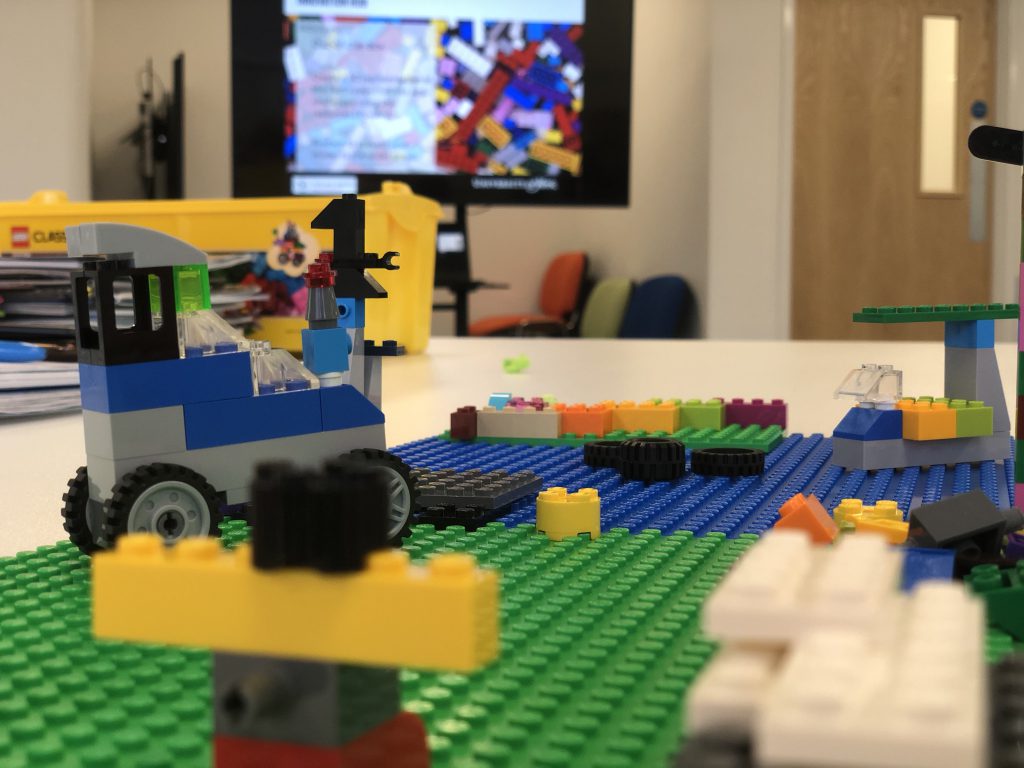
Why these creative facilitation techniques work
There is method and rationale behind these facilitation suggestions. When you ask delegates to build something in 3D, the magic comes when they actually explain what they have built. They use words to talk about their creation that are different from how they would respond to a straight question and answer conversation. Workshop participants use different words, and explain it differently. They talk about the model or the poster, which shifts their perspective. I really recommend that you use a dictaphone, a recording app on your phone or tablet to voice record delegates’ descriptions, or at least get the key points, phrases and things they are coming out with out onto flip chart as they are speaking.
Creative Facilitation Techniques for Developing a Mission
Ask ‘why?’
The mission is the core purpose of why the business or the team exists.
A really nice facilitation technique for this is to use the ‘Why?’ technique. Ask delegates to answer the question ‘Why are we in business?’ on a flip chart or sticky notes, writing down as may reasons as possible. Ask delegates to ask ‘why?’ again for every item they gave written down. For instance:
‘Why are we in business?’
‘Well, we exist because our customers need us to provide sandwiches for when they need to eat at work’.
‘So, why do those customers want those sandwiches from us? What is it that we do differently?… ‘
Delegates keep asking ‘why?’ several times over until they get to the core purpose of the business.
Simon Sinek‘s famous Ted Talk, Start with Why, is a good one to watch if you’re thinking of using this activity.
Ask ‘who do we serve, and how?’
Most of us feel that we are really contributing and doing something meaningful when we are doing it for other people. So, by asking delegates to consider ‘Who do we serve? Who are the people we are really trying to help? What is it that we bring that is special and unique?’ can be a powerful way of exploring the core purpose of the business.
Invite delegates to explore ways in which they might complete the purpose statement using the process I’ve included here in these visuals below:
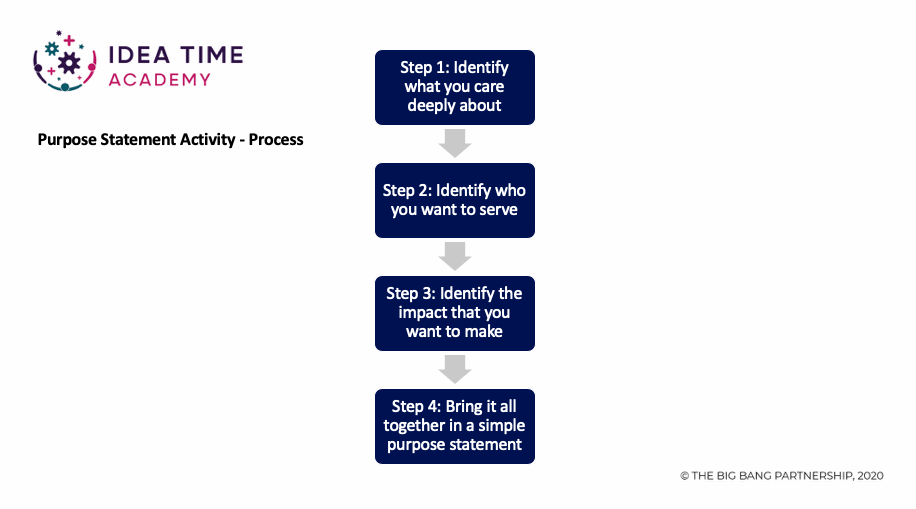
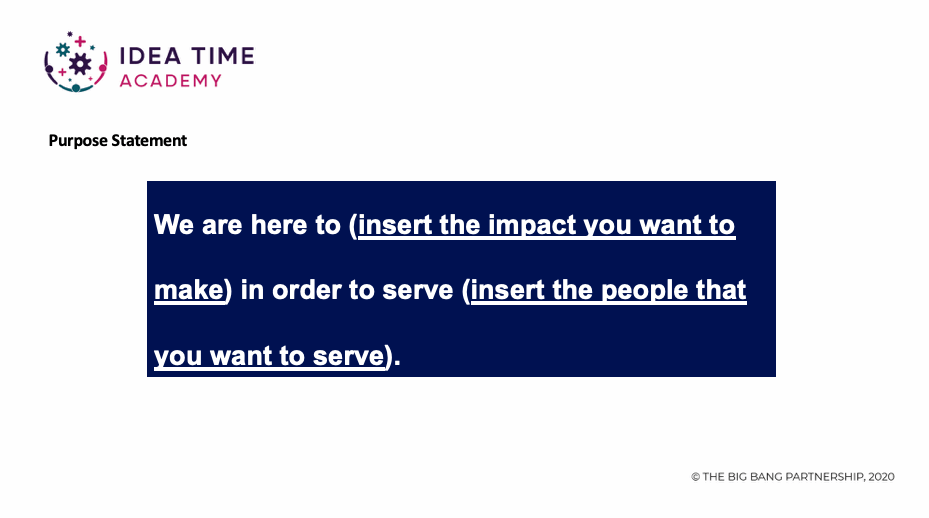
Storyboarding
The third facilitation activity I suggest for helping delegates to think about their mission is storyboarding.
Ask delegates to create a whole customer journey, or a customer experience scene-by-scene, breaking it down into the key components of what the organisation, group, or team does for customers. Delegates could draw, sketch, maybe use magazines, newspapers and cut things out, stick them down to create different scenes
The final scene in the storyboard is to show the impact on the customer, or transformation, that the business has provided. That transformation could be really big or really small.
Ask delegates to create as many customer journey storyboards as they can. Then ask them to review all of their creations – especially the transformations they enable for their customers – and use their insights to shape the contents of the mission statement.
Creative Facilitation Techniques for Developing Values
Values are the guiding principles that drive our behaviours, our standards, our ethics, our way of working, how we do business, and they are super important for teams. There are some really nice things you can do in workshops to help you delegates to define their shared values.
This is what we look like when we are working at our very best…
Invite teams to create a poster which depicts them working at their very best, when they are really on fire, performing brilliantly, everything is going well and the customer is delighted. Ask delegates to create this in images and then as a next stage add in some key words that describe the values in action.

Sharing the love
Pair people up and ask them to write 3-5 positive words that describe the very best qualities of the colleague they are paired with on sticky notes, only writing one word per sticky note (so each person will write 3-5 sticky notes).
Individuals share their sticky notes with their colleague in their pair, and have a discussion about them.
The next step is for all of the sticky notes to be put out onto a wall, or white boards, and get clustered, so that similar ones are put together. What you are doing at this stage is taking the very best qualities in the existing team, getting all those describing words out in the team’s language, and identifying themes so that the values can start to emerge.
The final phase of that activity is actually then to ask the group to write a sentence or two each around what they mean by those words, and if those words were relevant to the business, to describe the business, how those words would be used to describe the business.
Attribute listing
The third creative facilitation technique for developing values is called ‘attribute listing’. Provide a pile of cards, each with a different potential value on it. Use about 40-50 different cards, with just one word per card, on tables around the room. Here are some examples of words you could use in the visual below.
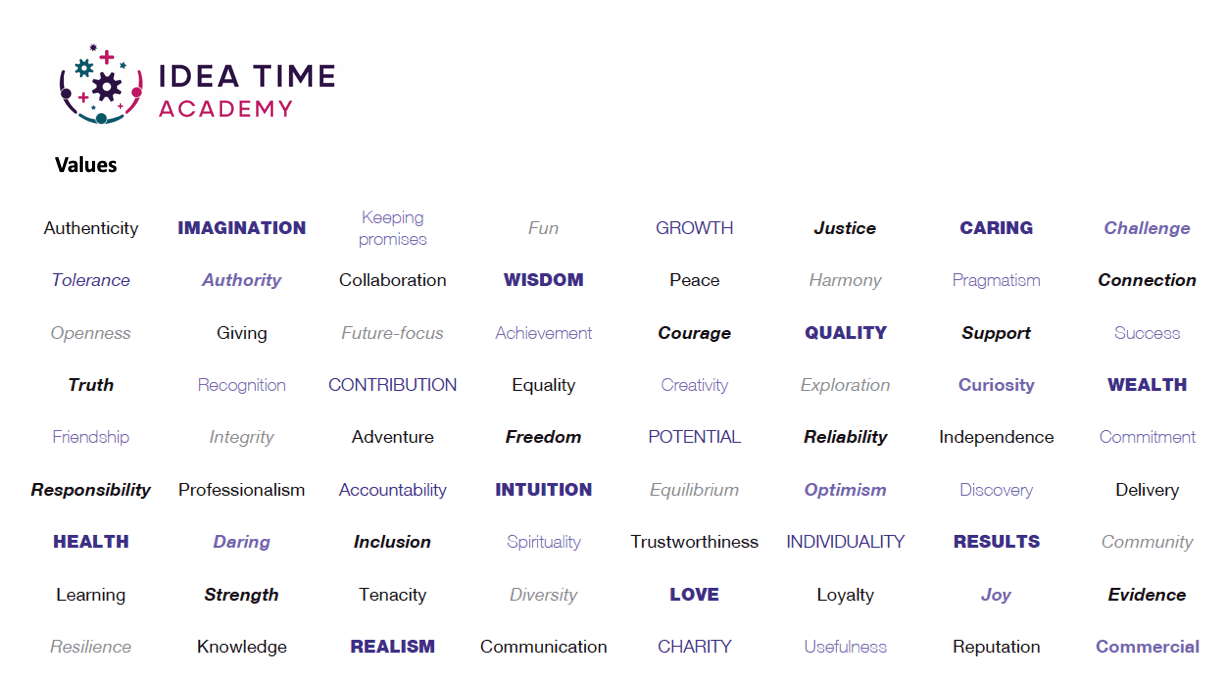
Ask delegates to do a ‘sort’ in small teams to identify which words are relevant to them, and which ones aren’t, and to add any in that are missing. Have some blank cards available for this.
The next step is for delegates to prioritise from the cards they have chosen, and select a final set of just 3-5 words per group.
The last step is for delegates to write a statement that defines each of the words they have chosen, and present their thoughts back to the wider group. As an example, here are the values of our business, and the supporting definition statements for each of those values.
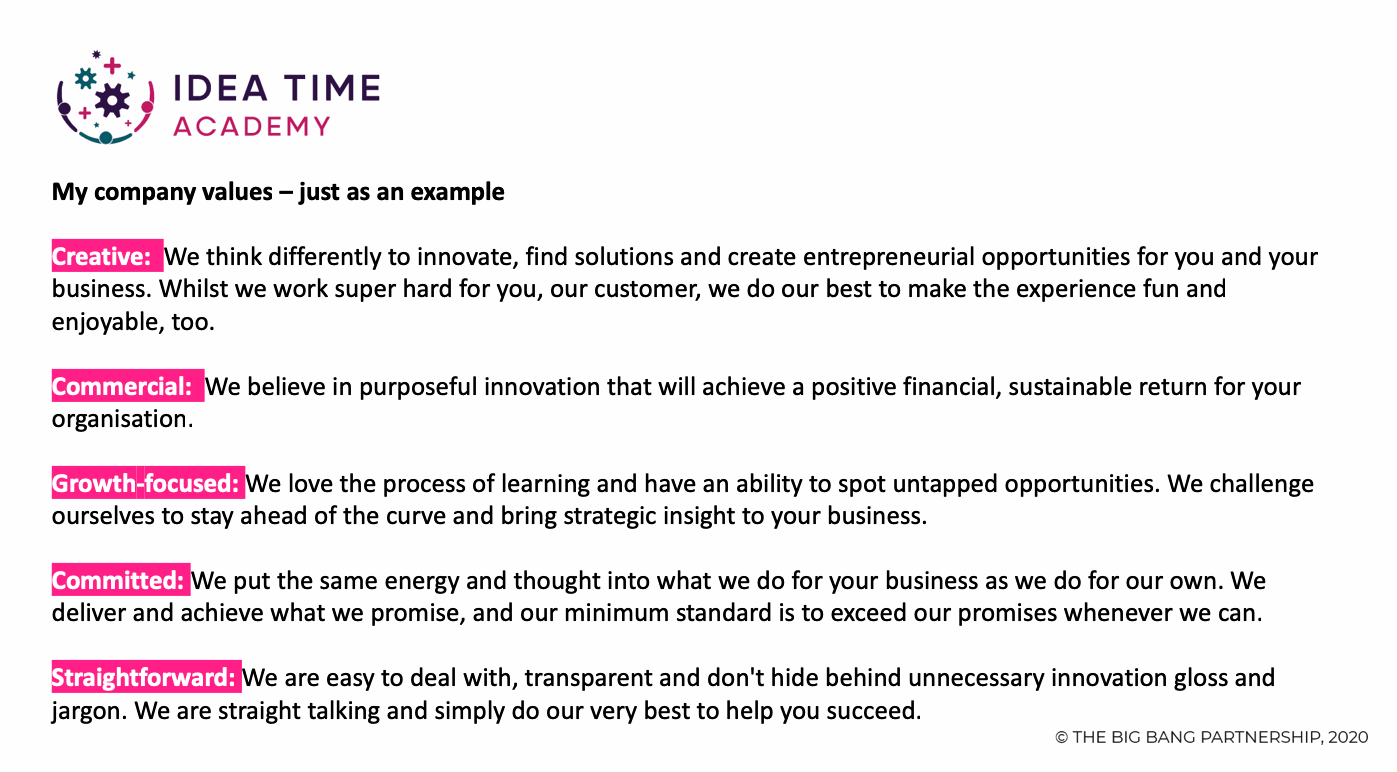
Next steps
Each of these techniques for vision, mission and values facilitation sessions is tried and tested. They successfully help to create content that can then be crafted and word-smithed as a further stage.
If you’d like some easy tips to help bring your company values to life, turning them from words on a page into your organizational culture, have a look at my article here.
Thank you so much for reading – I hope you’ve found these suggestions helpful. I’d love to hear how you get on with them when you use them. Please do get in touch with any questions. If you’re interested in expanding your creativity, impact and confidence as a facilitator, join my free Facebook group, Idea Time for Workshop Facilitators. We are a group of supportive, collaborative and like-minded facilitators. You will be made very welcome when you come to join us.

